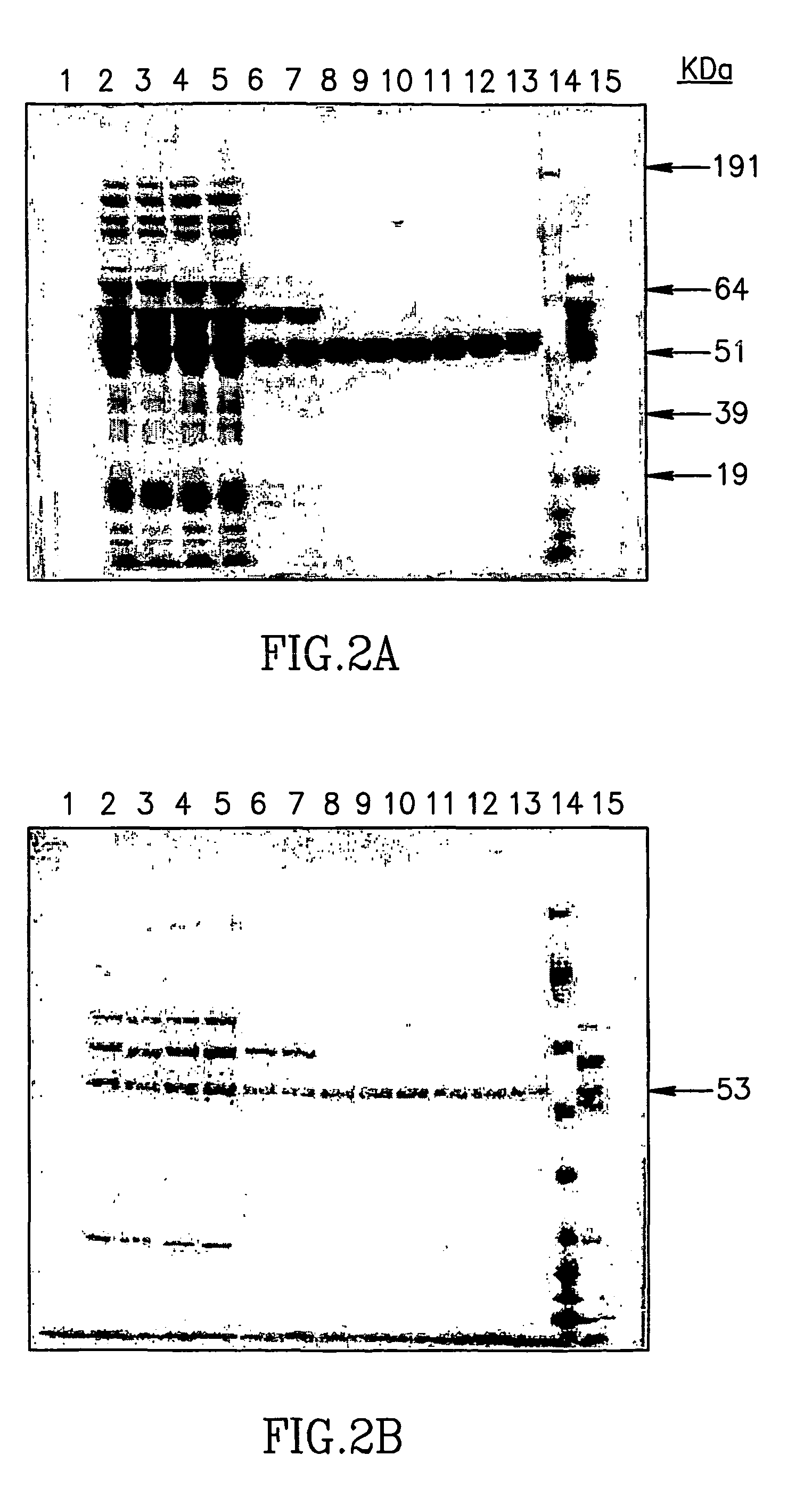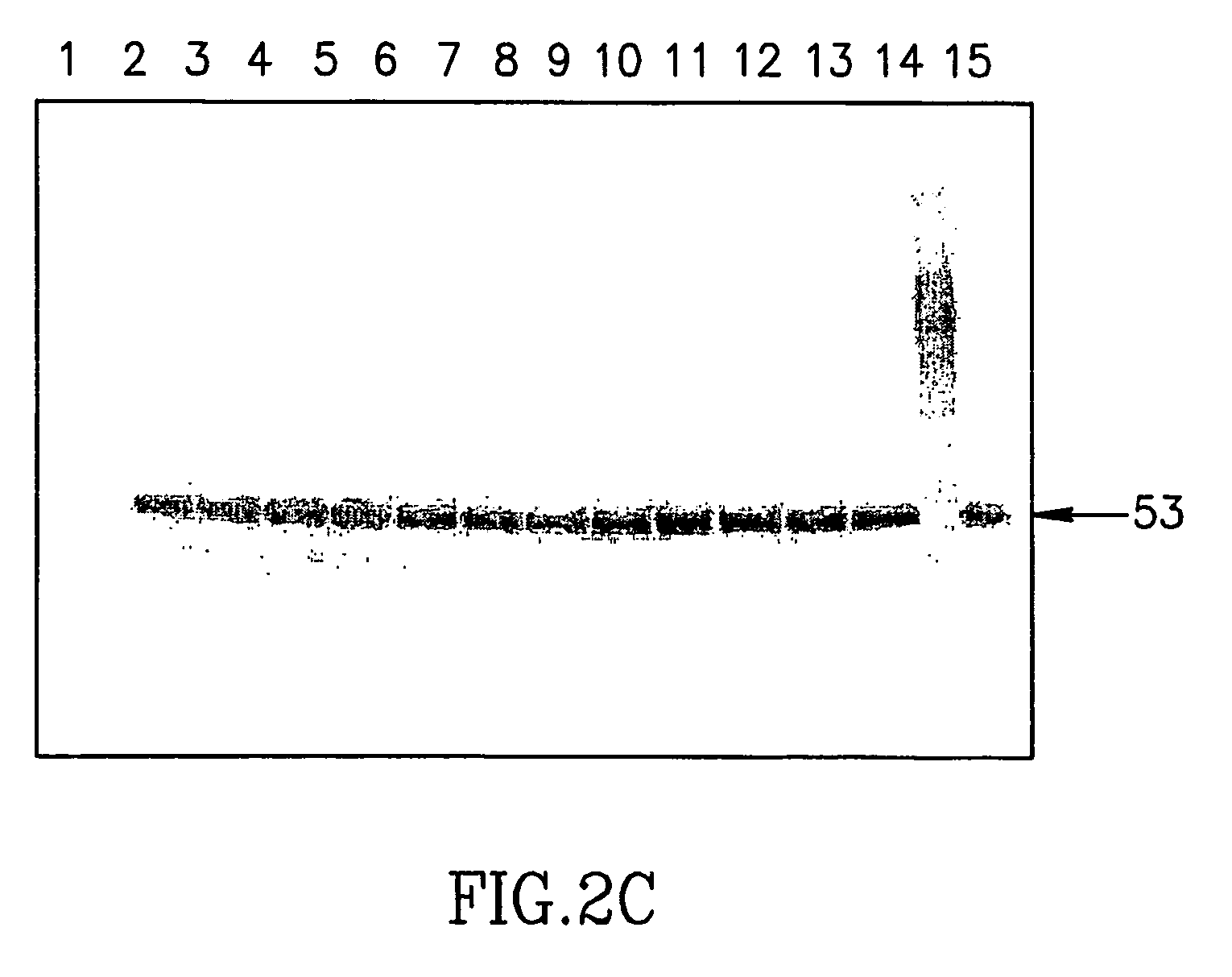Large scale preparation of alpha-1 proteinase inhibitor and use thereof
a proteinase inhibitor and large-scale technology, applied in the field of purification of alpha1 proteinase inhibitors, can solve the problems of complex recombinant plasma protein production, morbidity and mortality of cf patients with lung diseases, chronic lung tissue damage and emphysema, etc., to reduce the ph of dispersion, improve precipitation, and inhibit column flow and capacity
- Summary
- Abstract
- Description
- Claims
- Application Information
AI Technical Summary
Benefits of technology
Problems solved by technology
Method used
Image
Examples
example 1
Pretreatment of the Source Material
[0140]In a preferred embodiment, the starting material is Cohn Fraction IV-1 paste, which is obtained by the Cohn-Oncley fractionation technique, well known to those of skill in the art. The preparation of an aqueous solution from the Fraction IV-1 paste is described below.
[0141]The IV-1 paste is dissolved in about 35 volumes of water-for-injection grade water, (IV-1 paste weight in kg times 35). The amount of starting paste, 75-87 Kg per purification process, is added to a jacketed stainless steel tank in portion. The pH of the mixture is adjusted to 9.2 immediately after mixing of the first portion, and it was further adjusted by 0.5N NaOH until all the paste and water are added. The solution is mixed for approximately 10 minutes.
[0142]Fraction IV-I paste, like other plasma fractions, contains various proteins, such as lipoproteins, immunoglobulins, globulin, metalloproteins, etc. These proteins must be separated from the API to produce a liquid ...
example 2
First Anion Exchange Chromatography
[0145]The resin used for the first anion exchange chromatography was DEAE-Sepharose fast Flow, packed in a stainless steel 316-L column (CF 1000 / 150 SS CHROMAFLOW, Pharmacia), having a volume of 117 liter.
[0146]The DEAE-Sepharose resin was first equilibrated step-wise with sodium acetate buffer as follows:
[0147]a) pH 4.0, conductivity 10.0 mS / cm
[0148]b) pH 6.0, conductivity 3.0 mS / cm
[0149]Flow rate: 7-20 liter / min.
[0150]After the procedure described in example 1 the filtered supernatant obtained was already at the suitable pH and conductivity conditions of pH 6.0 and 3.0 mS / cm. It was therefore directly loaded on the equilibrated DEAE-Sepharose column, at a flow rate of 12-14 liter / min.
[0151]In such large-scale production, it is critical to adjust the washing conditions such that the column will be loaded at its maximal capacity, and yet that no API would leak out in the flow through. This was achieved by a two-step column wash, both with sodium ac...
example 3
Adjustment of Water Content and Ion Composition
[0153]The API-containing effluent was concentrated to 100 kg (total weight) by ultrafiltration with polysulfone membrane with a nominal cut off of 10 kD and total membrane area of 12.2 m2 (UFP-10C-65) in a Hollow Fiber cartridge (Amersham Biosciences). The retentate pressure was 15-20 psi and the flow rate 20-40 liter / min. The filtrate was then discarded and the retentate was diafiltered against water-for-injection (WFI) grade water. The retentate pressure was 15-20 psi at a flow rate of 20-40 liter / min., and the diafiltration was continued until the solution reached a conductivity of 4.0 mS / min.
PUM
| Property | Measurement | Unit |
|---|---|---|
| temperature | aaaaa | aaaaa |
| temperature | aaaaa | aaaaa |
| molecular weight | aaaaa | aaaaa |
Abstract
Description
Claims
Application Information
 Login to View More
Login to View More - R&D
- Intellectual Property
- Life Sciences
- Materials
- Tech Scout
- Unparalleled Data Quality
- Higher Quality Content
- 60% Fewer Hallucinations
Browse by: Latest US Patents, China's latest patents, Technical Efficacy Thesaurus, Application Domain, Technology Topic, Popular Technical Reports.
© 2025 PatSnap. All rights reserved.Legal|Privacy policy|Modern Slavery Act Transparency Statement|Sitemap|About US| Contact US: help@patsnap.com



